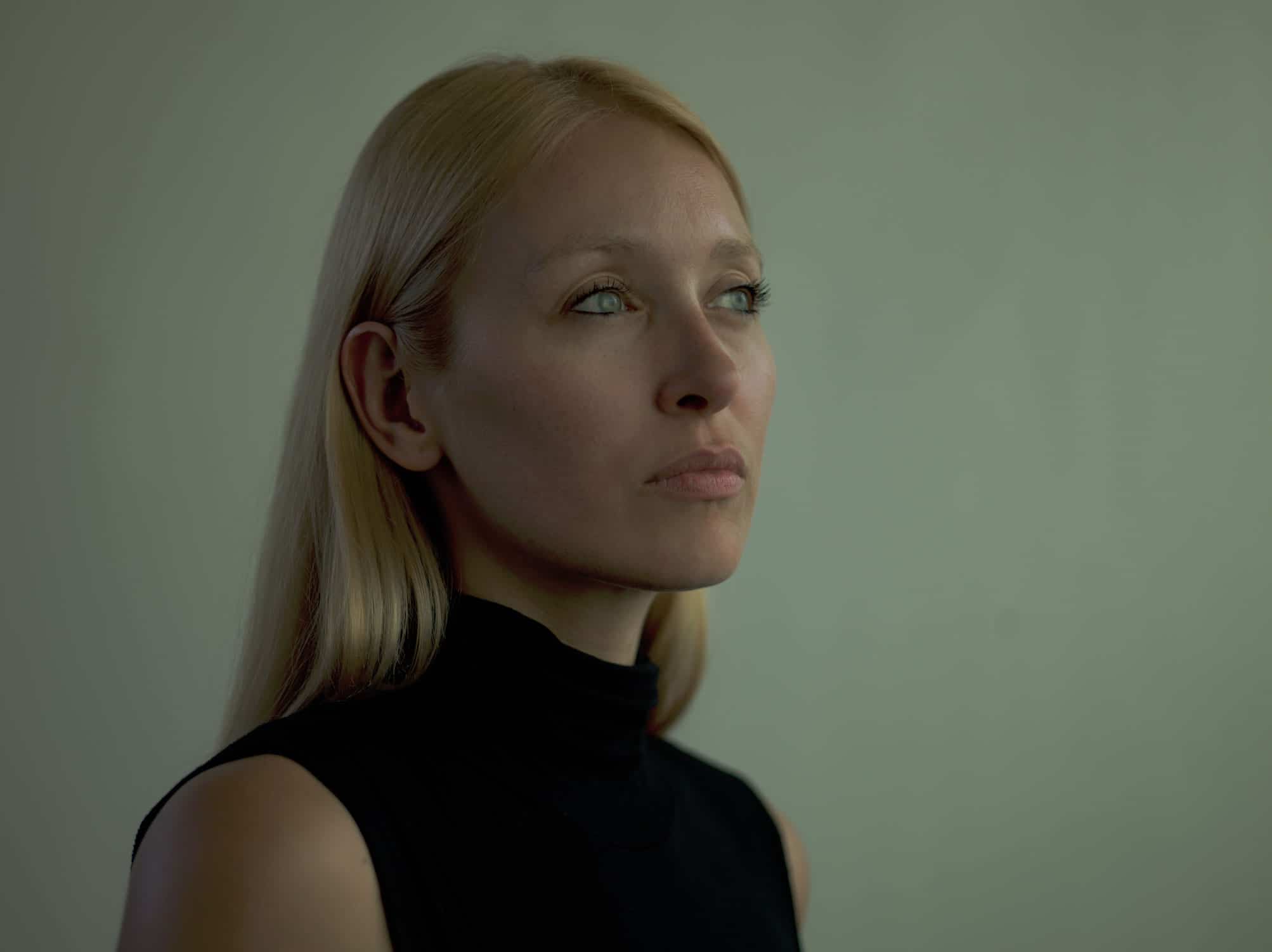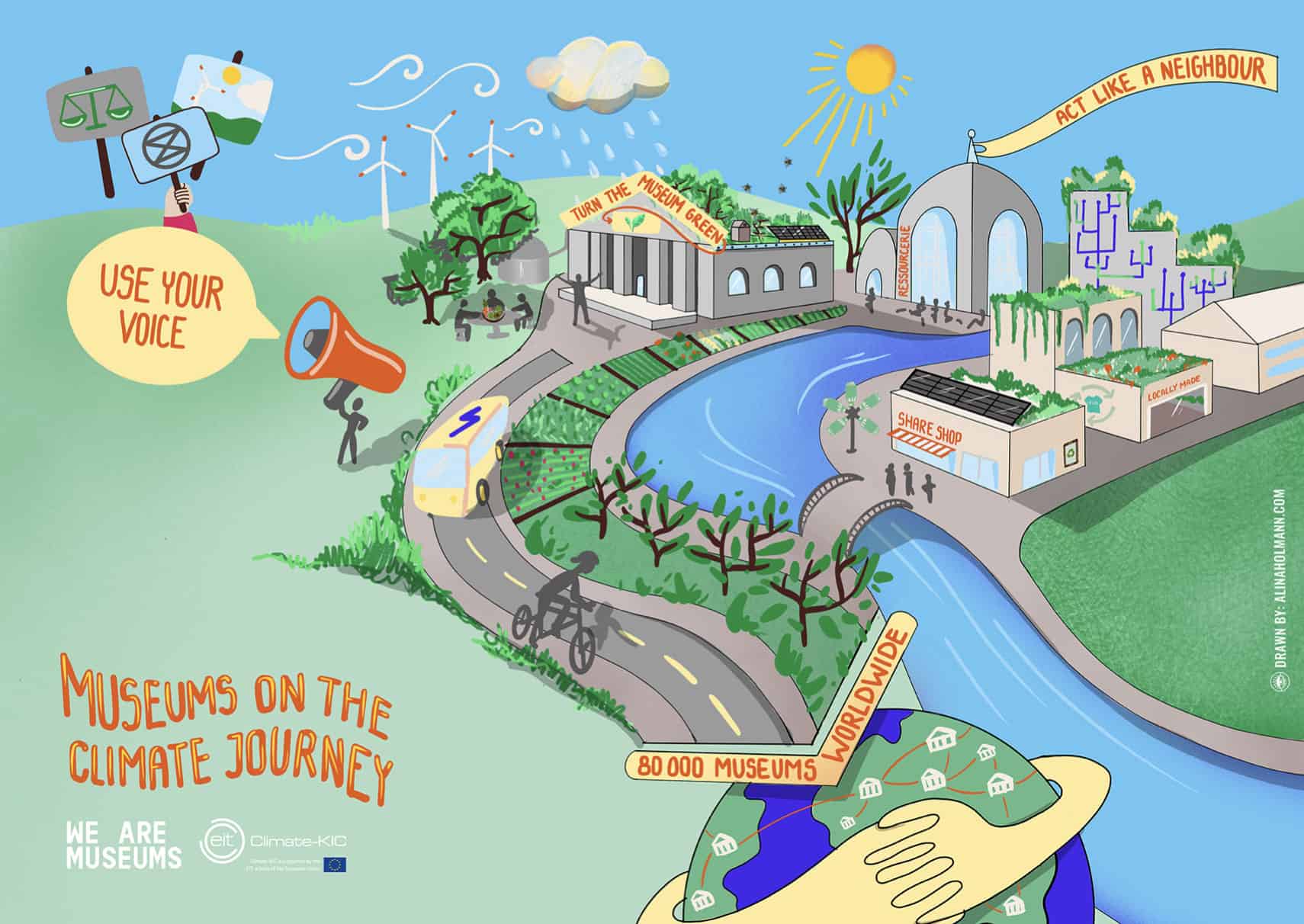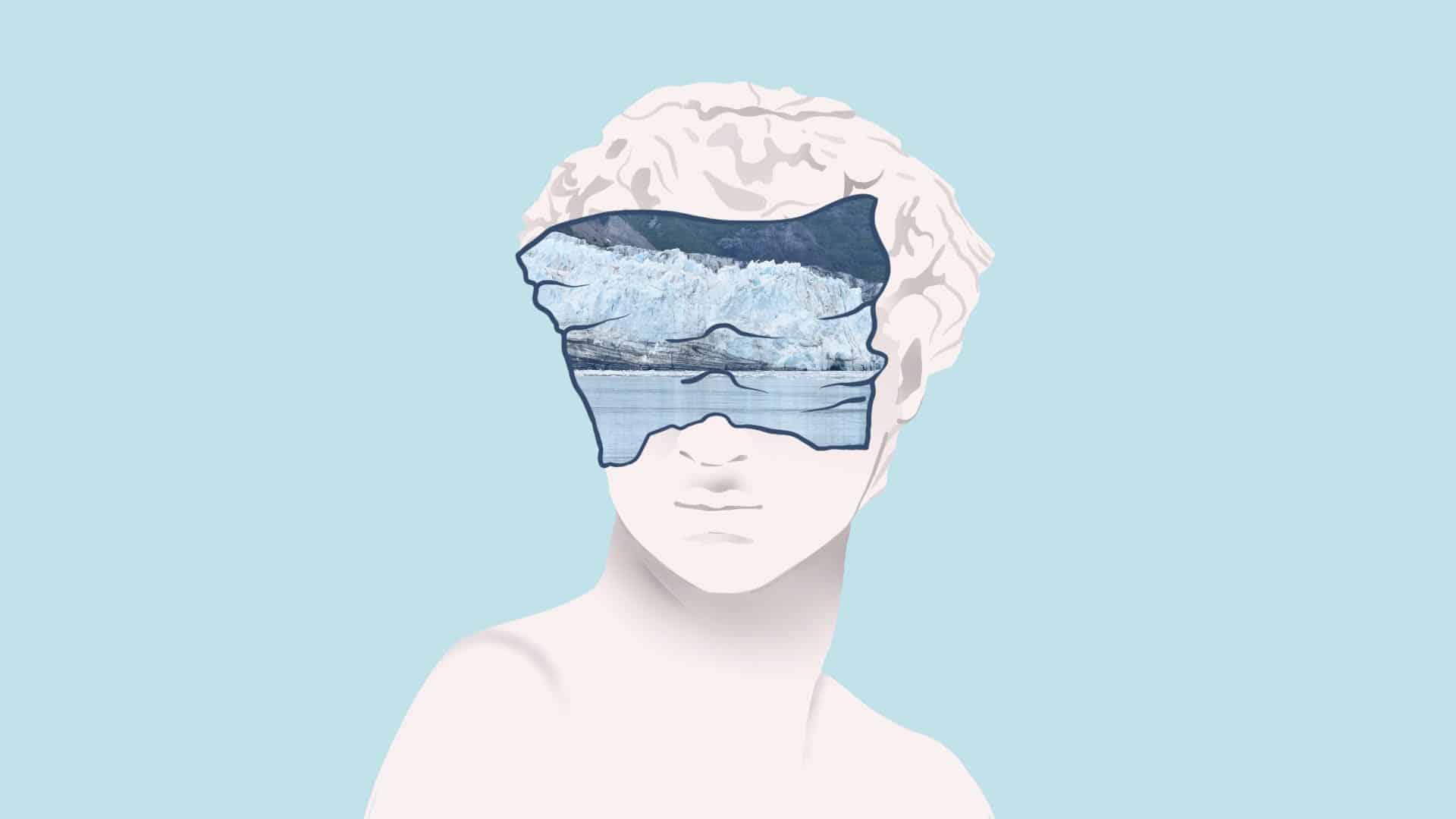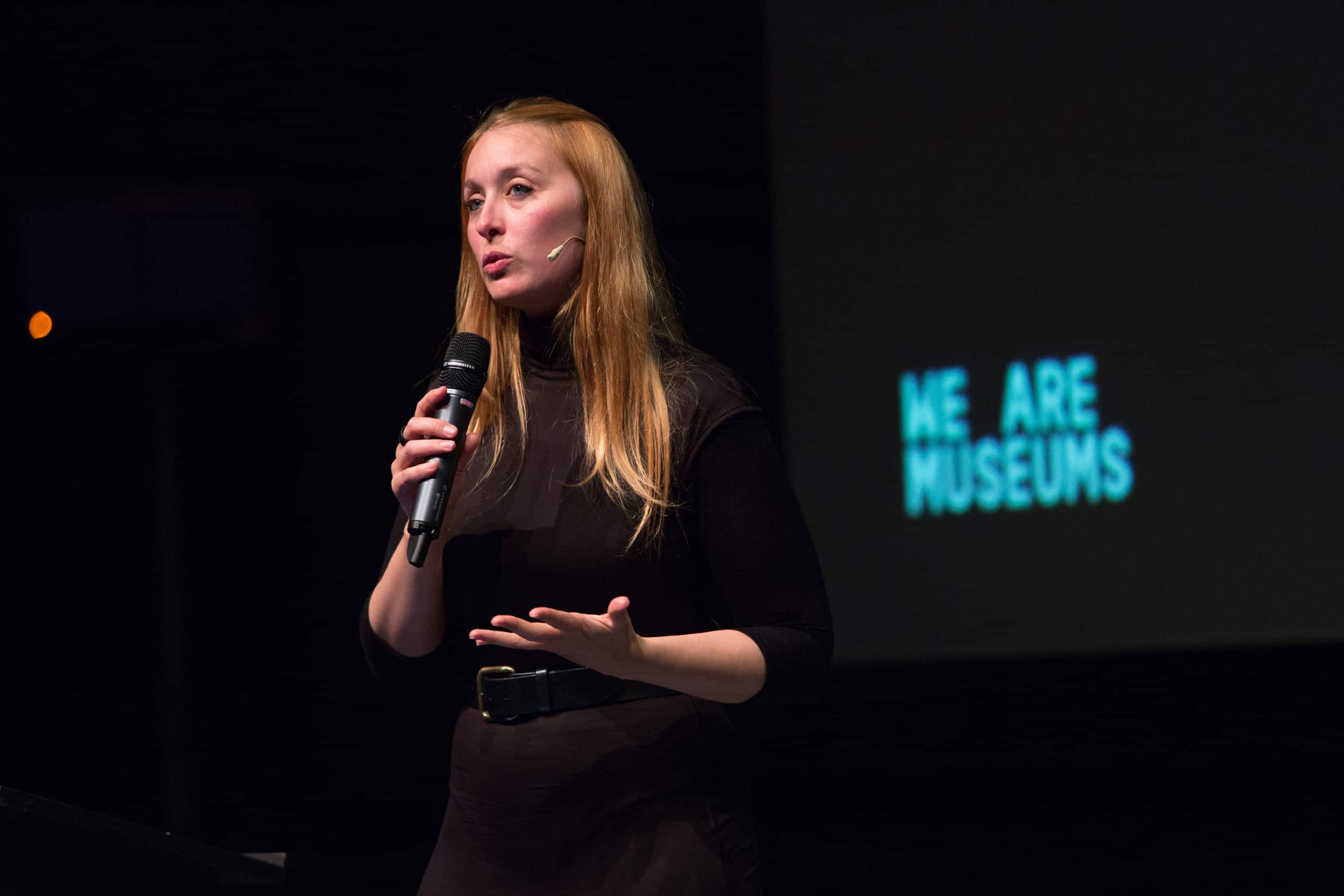Diane Drubay is a museum strategist and event curator who has been working towards the transformation of museums worldwide since 2007. Her main research interests revolve around the climate emergency and building lasting relationships between museums and their audiences. She’s the founder of We Are Museums, a community of museum professionals and enthusiasts, committed to transforming museums into environmentally conscious and innovative institutions that could become the driving force behind global systemic changes. This month, she will be a guest speaker at the Digital Cultures festival organised by Adam Mickiewicz Institute, where she will be discussing the idea of degrowth in the arts industry.

Diane Drubay, credits: Evlyn Bencicova
Aleksandra Mainka-Pawłowska: Could you tell us more about the idea behind We Are Museums and what inspired you to create the project?
Diane Drubay: It all started with the idea of bringing together people from different disciplines and trying to unleash the full potential of multidisciplinary thinking. After moving to Vilnius in Lithuania, having previous experience from France, Switzerland and Belgium, I realised that museums were stuck in different ways. When I arrived in Lithuania, I started meeting really great and inspiring communities, people coming from fashion and art but also other disciplines. All concerned and passionate about art and museums but not really working together. So it all started in a really organic way, with a desire to bring together the right people and to try and find solutions, share best practices and ideas, and to create a community of purpose.
First, it started eight years ago with a conference at the Contemporary Art Center (SMC) in Vilnius and then, step by step, it became bigger after we travelled to different countries. The sense of togetherness and belonging, of shared memories and purpose, was – and still is – very strong. In 2019, we held an annual gathering at Museum Śląskie in Katowice. We dedicated half of our programme to the climate emergency and decided not to hold another conference in 2020, instead dedicating our energy and time towards our new programme, Museums Facing Extinction, with the support of EIT Climate-KIC. It was supposed to be a series of workshops and events anchored in the local scene, but then COVID came and things slightly changed. We decided to recreate the sense of belonging by starting an online community two weeks after the lockdown started, on the 25th of March. Now We Are Museums’ community is even bigger and more international. It’s almost 800 museum professionals and lovers, all sharing common passions and the goal to transform museums so they can become the heartbeats of our society. We are also delighted to be able to start organising our events related to Museums Facing Extinction again, with one event taking place in Paris in October and another one at the MO Museum in Vilnius in November.
AMP: What is your vision of the ideal museum of the future?
DD: That’s a really tricky one. I don’t think there’s one definition of the ideal museum of the future. I believe it should be anchored in the local community and should reply to the local needs while serving global purpose and agenda at the same time. Museums should be for people first, using their collections and stories as mediation tools. It should be fully committed to the local community and to people’s needs, looking for new ways to contribute.

WAM, Museums on the climate journey, 2020
AMP: What aspects do you think make museums suitable to become the driving force behind global systemic changes?
DD: The main purpose of our programme, Museums Facing Extinction, consists of four levels of action museums should follow to become climate champions and systemic change makers. Traditionally, a museum is a space, most of the time a big one, that can host many people. If a museum is ready to listen to its community, they can co-imagine and co-create the space together. Being able to do that is so precious in our world and will be even more in the future when most of us will be living in overcrowded cities. Having a space right in the middle of the city and its community, on the intersection of roads and paths, is the most precious asset of museums today.
They are also really trustworthy and there are studies that suggest people trust museums more than TV and other media. It’s also a huge responsibility – museums should be aware of it and try to cultivate it. It’s really unique and I can’t see any other institution or entity being given so much trust and holding such power.
Museums are also part of local communities, which means they are able to build relationships with their neighbours. To be there and follow their lives, needs and transformation. This is really unique because if you start seeing a museum as your neighbour, not a central place in the neighbourhood, but a neighbour – next to a barber, bakery, other shops, community centres and schools – then the museum becomes part of people’s lives.
Most of the time, museums have the support of policymakers and public entities, meaning they have a voice if they want to become an advocate for a cause. They can declare the state of emergency, like Tate or the Natural History Museum in London have done. They can push for different policies and change. Of course, it’s not always the case and it’s really tricky to have this voice in some countries – everyone knows what I’m talking about.
Being such a powerful and trustworthy institution makes museums more suitable for this task than other institutions. Finally, some people say there are more than 80,000 museums on this planet. Just try to imagine it – if all the museums were actually working towards the same agenda and a better future, the impact could be huge.

WAM – Illustration – Museums For Climate
AMP: Many people visit museums on rare occasions and don’t feel attached to them. What can art institutions do to encourage visitors to come back and get involved?
DD: Trying to reach out to people is still one of the biggest struggles of museums. That’s where Nina Simon’s vision and her project OF/BY/FOR ALL is really relevant. Because if you become a neighbour, talk to your visitors and become part of the community rather than just hosting it, you can build a symbiotic relationship with different local actors. And then you can curate your offer and space. If you listen carefully and care for people, you can turn your museum into something useful to everyone. It also means you have to understand the diversity of your audience and this is something museums are now working on. There are already some beautiful examples of institutions doing it. I don’t know if the art factor is even relevant – I think museums are places for people to share, get inspired, find new means to educate themselves, whether it’s through art or not. I don’t think it really matters. It’s really important to stay relevant to people living around and to the future generations.
AMP: Smaller museums often work on tight budgets and can’t afford using modern technology and building strong online presence. Are there any alternative ways for them to get involved?
DD: I think that modern technology and online presence should only be used if it’s relevant for the museum and its audience. In some countries, it’s totally useless and won’t work – it won’t help museums reach out to their community. This is also something we’ve seen during the lockdown – museums are turning to radio, podcasts and local newspapers to reach out to local communities and be there without forcing their way. That’s also what I meant when I said museums should be part of the ecosystem. No one should judge and push museums if they’re not present online.
AMP: Do you think artists can also contribute to the idea of degrowth in the art world?
DD: Of course, artists play a huge role in the idea of degrowth in the art world. They can raise awareness and show new practices and behaviours, transform mindsets and values. They show that change should be the only constant in life with different means. More and more artists are trying to reassess their practice and be more sustainable. If you look at the Anchorage Museum in Alaska, they have beautiful collaborations with artists. They ask them to actually reshape the daily surroundings of the citizens with key messages. It’s simple but it’s working – it raises awareness and brings creativity in people’s everyday lives.
AMP: How does your research and the ideas you promote as a curator influence your art? Are they present in your photography?
DD: My photography, and even more my video art, are about taking time to listen, watch and understand nature. My works embody the natural speed and they’re all about deep listening and being in harmony with our surroundings. They’re windows that allow us to see the future differently using nature. So yes, the values I support through my art and professional life are exactly the same, I just use different means to talk about them. For instance, I’ve travelled a lot by myself to be able to empathise with Nature and understand its rhythm – in Poland, Lithuania, Iceland, Denmark. And I just try to observe and capture time and the transitional states of nature which could bring certain kinds of transcendence. It is actually this magic that happens when you really welcome change in your life, I think.
AMP: Lastly, due to the ongoing pandemic and lockdown restrictions, it’s very easy to feel disconnected and out of touch. How can museum enthusiasts support their favourite art institutions and stay involved in the community’s journey for a better future?
DD: During the lockdown, museums have been very innovative and they’ve shown a lot of strength and their ability to be resilient and adapt to different situations. Personally, I’ve been really impressed. It’s difficult to dive into this question because I could list small initiatives for hours. I’d say, just check what’s on your local museum’s website or their front door and you’ll see that life is still happening and communities are still gathering and transforming our future.
Diane Drubay will be part of the Degrowth in Arts Industry discussion panel at the Digital Cultures festival organised by Adam Mickiewicz Institute on Wednesday the 21th of October at 18:00 CEST. The event will be available online on digitalcultures.pl/en.

courtesy: Alexander Hana









